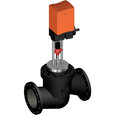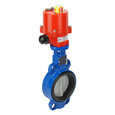Zone valves
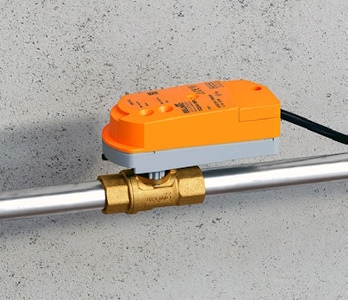
Figure 1: Belimo zone valve
Zone valves are mechanical devices commonly used in heating, ventilation, and air conditioning (HVAC) and irrigation systems to control the flow of water or steam to different zones or areas within a building. Zone valves allow for zoned temperature control and energy efficiency. By dividing a building into separate zones, each with its zone valve, occupants can independently control the heating in different rooms or areas, optimizing comfort and reducing energy waste. This article explores zone valves' operation, features, and typical applications. Read our article on HVAC valves to learn more.
Learn about other types of valves in our valve fundamentals article.
Table of contents
View our online selection of HVAC valves!
Operation and types
Operation
Zone valves are typically motorized and controlled by electric actuators, which open and close the valve (eg., a ball valve) based on the input from a thermostat or control system. Thermostats regulate the zone valves, ensuring they open or close when needed to maintain the desired temperature within each zone. When the valve is open, it allows the flow of hot or cold water (or steam) through the pipe and into the designated zone. Conversely, when the valve is closed, it prevents the flow, effectively shutting off heating or cooling to that area.
Zone valve types
Zone valves are typically classified by the number of ports.
Two-position zone valves: Two-position zone valves have two ports, either fully open or fully closed, providing on/off control of the fluid flow to a zone. The spring in the valve body ensures mechanical switching in case of a power failure.
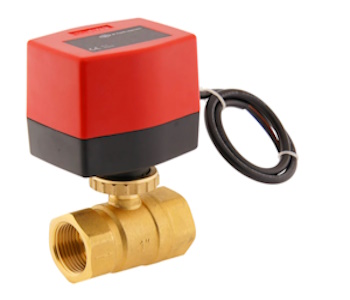
Figure 2: 2-way ball valve for zones
Three-way zone valves: Three-way zone valves have three ports. They direct flow from one common inlet to one of the two outlet ports, depending on which port is on/off. These valves can divert fluid flow between two zones or mix hot and cold fluids to achieve the desired temperature.
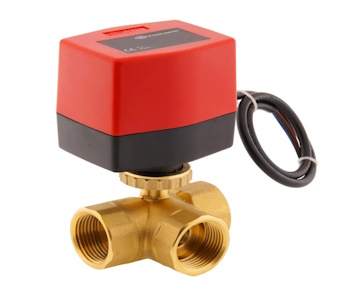
Figure 3: 3-way ball valve
Read our central heating article for more information on zones in a building and how zone valves work.
HVAC zone valve
Features
Compact structure suitable for tight spaces
Tight sealing
Self-cleaning design, hence resistant to contamination
Equal percentage flow characteristic for perfectly modulated flow
Actuator with extremely low power consumption
Manually adjustable flow rates (Kv)
Configurations
HVAC zone valves are installed in multiple components like fan coils, chilled and heated ceilings, floor heating, and radiators. Their most common configurations are:
-
Quick compact zone valve: The quick-connect, highly compact zone valve (Figure 1) comes in two types:
- 2-way control valve with different size options (DN 15, DN 20, and DN 25)
- 3-way changeover ball valve of the same sizes
-
Pressure-independent flow limiter valve: Pressure-independent means the valve maintains a steady flow rate despite pressure changes, which is crucial for zoning applications. Pressure-independent flow limiting valves help balance the flow between different zones. The valve offers several key features:
- Permanent and automatic hydronic balancing
- High flow capacity
- Suitability for contaminated media
- Tight sealing
- Low power consumption and short running times
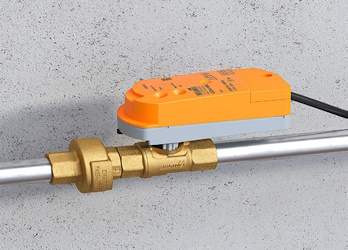
Figure 4: Belimo pressure-independent flow limiter valve
-
6-way zone valves: The 6-way control valve is designed for heating and cooling in a 4-pipe system. A 4-pipe system has two separate piping loops for heating and cooling, allowing for better temperature control and flexibility. The 6-way valve is used to switch between these loops and control the flow of hot and cold water or refrigerant to achieve the desired temperature in a space.The 6-way zone valve offers the following advantages:
- Replaces four 2-way valves, four actuators, and two control units
- Versatile with different kv combinations for precise control
- Compact for easy installation in low ceilings
- Ensures safety by separating cooling and heating circuits
- Includes a pressure relief function for maximum plant safety
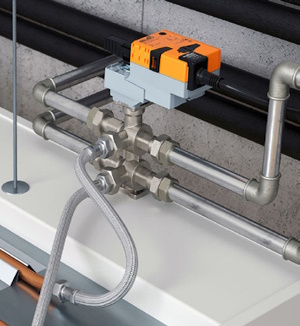
Figure 5: Belimo 6-way zone valve
Other applications
Boiler zone valve
Zone valves find applications in domestic hot water storage tanks. These valves help direct hot water from the boiler to different places like radiators and the domestic hot water storage tank. When the radiators reach the desired temperature, the valve closes off the hot water to the radiators. It opens a pathway to send the hot water to the storage tank, so it's available for other uses like showers and taps. This method ensures efficient distribution of operating costs and promotes energy efficiency by facilitating heat accumulation in buildings. In certain models of three-way zone valves, manual opening is possible. This means the ball valve divides the flow equally, allocating 50% to zone A and 50% to zone B. This feature is a crucial safety measure, particularly in preventing boiler overheating.
Irrigation zone valve
Zone valves for irrigation are commonly used in sprinkler systems to control water flow to different zones or areas of a landscape. They are activated by signals from the irrigation controller and open or close to allow or stop water flow to the designated zone. These valves are designed specifically for outdoor use and are typically made of durable materials to withstand exposure to weather and moisture.
Zone valve maintenance
Zone valves may need to be replaced for various reasons, such as malfunctioning, damage, or as part of an upgrade or system renovation. Common failure modes are:
Overheating: Insufficient ventilation for heat dissipation can lead to overheating. While removing the cover temporarily can provide a short-term solution, it may eventually lead to motor failure. Ensure proper ventilation to prevent overheating issues in zone valves.
Burnt motor: Frequent overheating or incorrect voltage/current can cause damage to the electric motor. Check the power supply, wiring, and the root cause of the motor burnout before replacing the motor.
Leaking or stuck open/closed: The zone valve may become stuck either in the open or closed position and fail to move when needed. This can be due to debris or sediment buildup, mechanical issues, or a malfunctioning actuator. Replace the valve if it gets stuck.
Noisy operation: Zone valves may produce excessive noise during operation due to worn-out bearings, misalignment, or loose components. Unusual clicking, buzzing, or grinding sounds can indicate a problem.
Electrical issues: Electrical failures can occur in the wiring, control board, or connections between the actuator and the control system, preventing proper communication and operation of the valve.
Note: The zone valve replacement process may vary depending on the specific zone valve and the configuration of the HVAC system. It is recommended to consult the manufacturer's instructions while replacing the valve.
FAQs
How do zone valves operate in boilers and irrigation systems?
Zone valves in boilers and irrigation systems operate by opening or closing to control the flow of water or fluids to specific zones or areas. They can be manually operated or automated using a lever or a motor-driven actuator.
What are the common issues with zone valves?
Common issues with zone valves include leaks, being stuck open/closed, overheating, or a burnt motor. Regular maintenance and inspection can help identify and address these issues.





